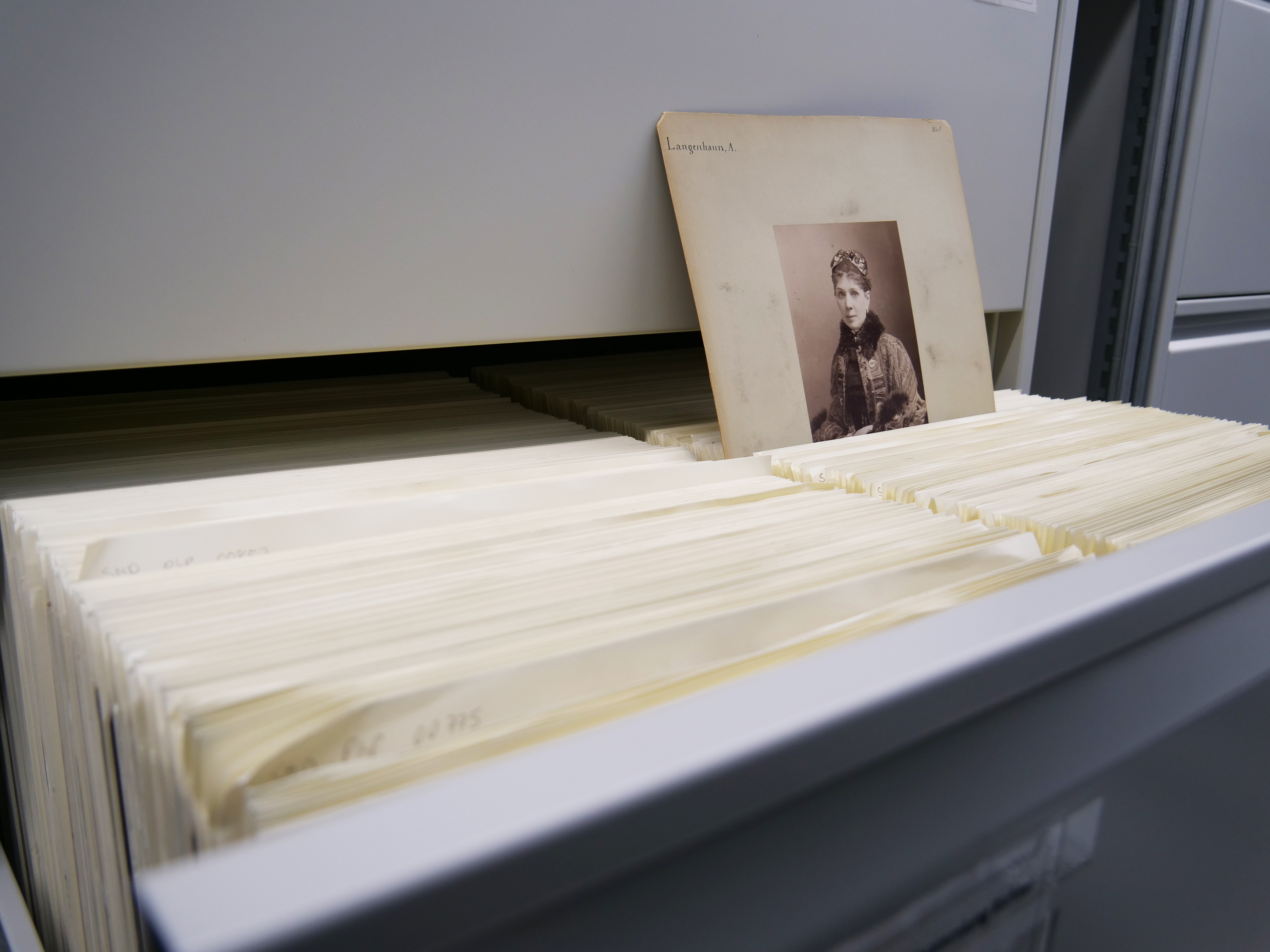Only a few closed collections have survived from the early days of the Stadtmuseum. For this reason alone, an almost completely preserved collection of around 2,700 portrait photographs on 2,100 carrier boards is of particular importance. The initiator was the historian, city archivist and city library director Otto Richter (1852 – 1922), who was director of the museum from its foundation in 1891 until his retirement in 1912. He compiled portraits of important citizens (and also some female citizens) to create a photographic gallery of honour, which was intended to perpetuate their memory in the city. The approximately 650 plates, labelled by Richter himself, form the core of the collection and the preservation, indexing and research of this important source of the city's history has been pursued for several years. With the support of the Saxon State Office for Museums, it has been possible to digitise all the fronts and backs of the panels and set up a database containing the relevant information on the images and the people depicted.
The masses do it?
Cataloguing methods and possibilities for gaining knowledge when working with mass collections
Conference (16 November 2018)
Behind many objects that are presented as individual pieces in collections of various kinds, there are mass holdings in depots and warehouses. They have been selected and emphasised from them – usually without making their former context clear. However, their significance is often only revealed in relation to their origin, the history of collecting and the organisations in which they were placed – whether they grew gradually, possibly chaotically, or were systematically arranged. This makes it all the more exciting and urgent to deal with such more or less extensive collections. Because the reverse is also true: mass stocks cause problems (and offer opportunities!): How can they be preserved? How can they be analysed? What insights can be gained from analysing them? How can they be presented? These questions and some of the answers to them were the focus of a conference held at the Stadtmuseum on 16 November 2018. This was a conference organised in preparation for the exhibition ‘Die im Licht steh'n. Photographic Portraits of Dresden Citizens of the 19th Century’ (15 February – 12 May 2019) organised by the Custody of the TU Dresden, the Saxon State Office for Museums at the Dresden State Art Collections and the Dresden City Museum. The speakers were not only dedicated to photo-historical collections, but also to natural history, cartographic and archaeological collections. The contributions have been published online and are available to download free of charge:
https://nbn-resolving.org/urn:nbn:de:bsz:14-qucosa2-353061
Those who stand in the light
Photographic portraits of Dresden citizens of the 19th century
Exhibition (16 February to 12 May 2019)
Since the end of 2016, historian Holger Starke and photo historian Wolfgang Hesse have been preparing an exhibition that was on display at the Stadtmuseum from 16 February to 12 May 2019. A catalogue has been published to accompany the exhibition, and all the portrait panels will also be published in an online database.
The exhibition and accompanying publications have analysed the profound social changes in the city around 1900. The socio-economic and cultural upheavals of the imperial era between the founding of the empire in the wake of the war against France in 1870/71 and its downfall in the First World War are reflected in this subject, which is only surprising at first glance. After all, the progress-conscious self-representation of the bourgeoisie in portraits is just as much a part of this as their depiction in the city museum as a public place of understanding about the origins and present of the community. Regardless of such vivid visualisation of historicity, however, the portrait collection has so far only been used as a resource for illustrating depictions of urban and personal history. Moreover, this has happened without the provenances of the pictures having been clarified, their forms analysed or their order described. In short, the research closes a large gap in Dresden's cultural history.
The fact that urban history is analysed and presented in this way is not a matter of course for a museum that does not operate as an art museum – and was a first for the Stadtmuseum Dresden in this intensity. However, such a media-orientated approach, going beyond conventional research based on written sources, allows new insights into specific periods. Urban history – as well as the history of the museum as a part of it – is understood in the context of an essential motor of general modernisation since the 1880s: in the context of our age, which is increasingly determined by image politics.
























